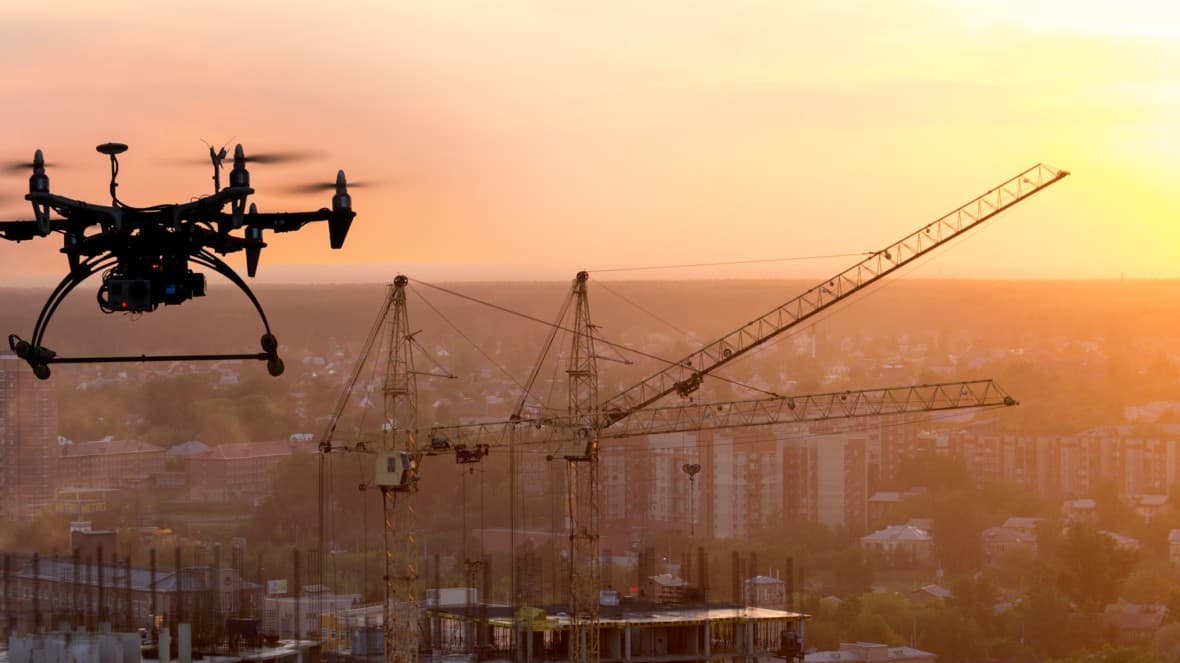Drone technology – benefiting from innovation

Drone surveys are a faster, safer and more cost-efficient way to survey at height. Sometimes referred to as aerial surveys, UAS (Unmanned Aerial System) surveys, or UAV (Unmanned Aerial Vehicle) surveys, drone surveys are an increasingly popular method of surveying from the air.
- The Carey Group
- Wednesday 18th September 2019
Share this:-
In a fraction of the time it takes to conduct a ground-based survey, a drone can fly and capture imagery of a project site that can then be processed into highly-accurate point clouds compatible with Building Information Modelling (BIM) software.
These point clouds are a 3D visualisation made up of thousands or even millions of georeferenced points which produce an accurate representation of the site, where both horizontal and vertical objects can be mapped.
Since this method of surveying does not require direct contact with the object, drones can be employed for tasks with minimal or no disruption to live processes and with a reduced risk to the health and safety of individuals, which ensures a much better reconstruction of the 3D model.
Drone surveys can be used where access is difficult or restricted, i.e. busy sites, old industrial compounds, buildings or grounds where asbestos or other contaminants are present or where the stability of structures is questionable.
There are numerous benefits achieved through the use of drone-based surveys, these include:
- Topographical surveys, spot levels, contours, terrain and man-made features can easily be extracted and plotted from the survey.
- Volumetric analysis, stockpile excavation and even stockpile volumes can be calculated. With the use of specialist software, cut and fill analysis can be performed to a design surface.
- 3D model generation can be employed when there is a requirement for precise 3D reconstruction of an object.
- When a remote or inaccessible structure needs to be inspected, close up shots can be provided.
- Images true to scale can be made to determine accurate quantities for reporting or billing without the need to go onsite. These can also be employed as irrefutable proof that particular progress was made on a specified day.
Even compared to new measurement equipment, such as GPS Rover, the drone has many advantages, these include:
- Survey speed – A 30 minute drone flight at an 85 metre altitude will cover an area of 250,000m2, equivalent to 40 football pitches. Compared to traditional methods, it would take a surveyor 30 hours to survey the same area on a 5 metre grid.
- The reliability of the data is much greater with drone surveys – This is because the end result is point cloud based, sub centimetre density, compared to one point every several metres with traditional methods.
- Drone surveys are a relatively cost effective way of taking surveys, measurements and images. They can be used an alternative to laser scanning at a fraction of the cost.
The drone industry has seen a boom over the past 5 years, with survey grade, off the shelf packages available for a moderate cost. It is expected that drones will eventually become common place in the surveying industry as they are now at Careys.
We'd love to hear from you, so please get in touch